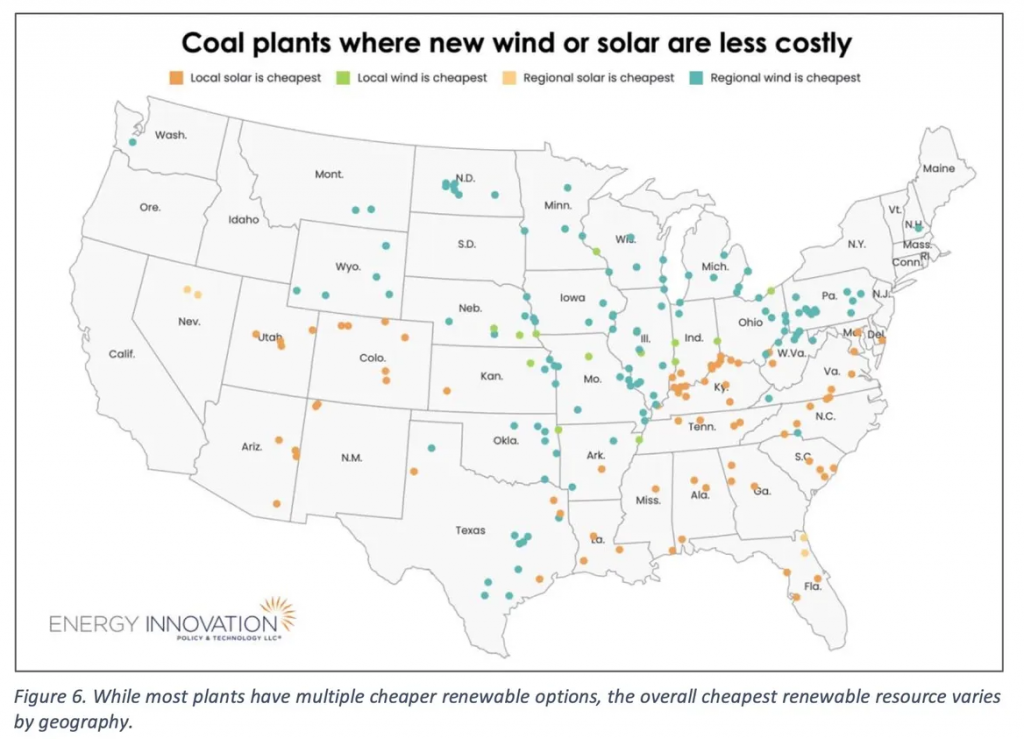Years of research have shown that replacing most coal facilities in the United States with a mix of new clean energy technologies can save billions of dollars while reducing air pollution and fighting climate change.
The shift from coal to renewable energy is not just financially advantageous thanks to Inflation Reduction Act tax credits and government funding, but it can also be done by building clean energy close to coal-fired power plants that are retiring.
According to a study issued this week by the energy and climate policy think tank Energy Innovation, it is now so expensive to maintain 99 percent of the coal-fired power facilities in the United States running that it would be cheaper to replace them with new wind and solar operations simply.
“It is clear switching to renewables saves significant money,” Energy Innovation said in a blog post.

For years, the cost difference between coal and renewables has been growing. However, between 2010 and 2019, worldwide solar projects became 89 percent cheaper due to improved technology and policies encouraging their usage.
However, in the United States, Energy Innovation claims that the hundreds of billions of dollars in federal tax credits included in President Joe Biden’s landmark climate spending package, the Inflation Reduction Act, have made the economic argument for replacing coal with clean energy “unequivocal.”

According to Energy Innovation, all except one of the country’s coal-fired power plants are more expensive to operate than to replace with new wind and solar. However, according to the think tank’s analysis, all but five could be replaced with more cost-effective renewable options within a 28-mile radius.
The savings from a coal-to-renewable shift would be so significant for the local option that they could finance the installation of 137 gigatons of four-hour battery storage, allowing renewable energy to be deployed even when there is no sun or wind.
These trends are projected to exacerbate the current loss of coal power in the United States, which already generates 52% less electricity than it did in 2010. By 2029, nearly one-fourth of the country’s remaining coal-fired fleet will be retired.

Energy Innovation advises state-level regulators to examine utility investment plans established before the passing of the Inflation Reduction Act because the renewable energy cost projections in previous plans are now out of date.
To promote a just transition for communities and coal employees, the organization also advises state legislatures and energy agencies to emphasize local renewable energy projects that generate jobs and tax money.


